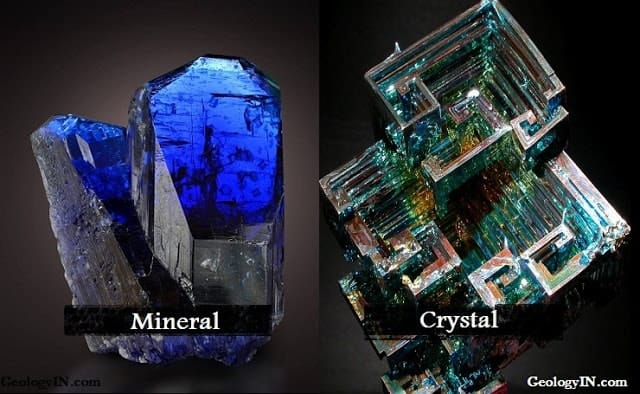Minerals are crystalline solids in which the self-forming atoms are arranged in a regular, three-dimensional roof like halite minerals. Under ideal conditions, such as in the void, mineral crystals develop, forming crystalline crystals under planar conditions, creating perfect crystals with planar surfaces (crystal faces), sharp corners, and flat cavities. In other words, a well-formed mineral crystal with a smooth geometric shape is the reflection of a regular internal atomic structure. All solids are not crystalline, eg natural and artificial glass, lacking regular atomic sequence and called amorphous, meaning kristal amorphous.

In the previous paragraph we used the terms crystal and crystal. When using crystalline for a solid having atoms in a regular inner structure, the crystal is a geometric shape with planar surfaces (crystal faces), sharp corners and straight edges. Therefore, the crystal is the expression of a crystalline structure.
Minerals with crystalline solids do not always produce well formed crystals. The formation of the crystals results from their close development to form a coherent whole in which the individual crystals are not visible or easily distinguished.
How do we know that the mineral masses are really crystalline? X-ray beams and light emitted through mineral crystals or crystalline masses provide evidence of a regular internal structure by behaving in a predictable mode. Another form of detecting that the minerals without significant crystals are truly crystalline are those with the ability to repeat or break through the flat, near-planar planes of minerals. Not all the minerals have cleavage planes, but many have. Such a uniformity indicates that the separation is strictly controlled by the internal structure.
